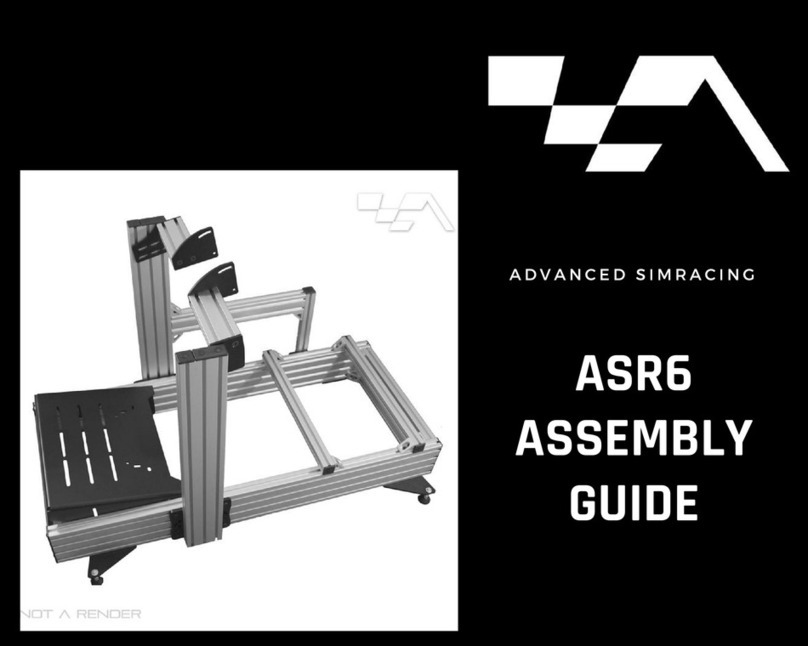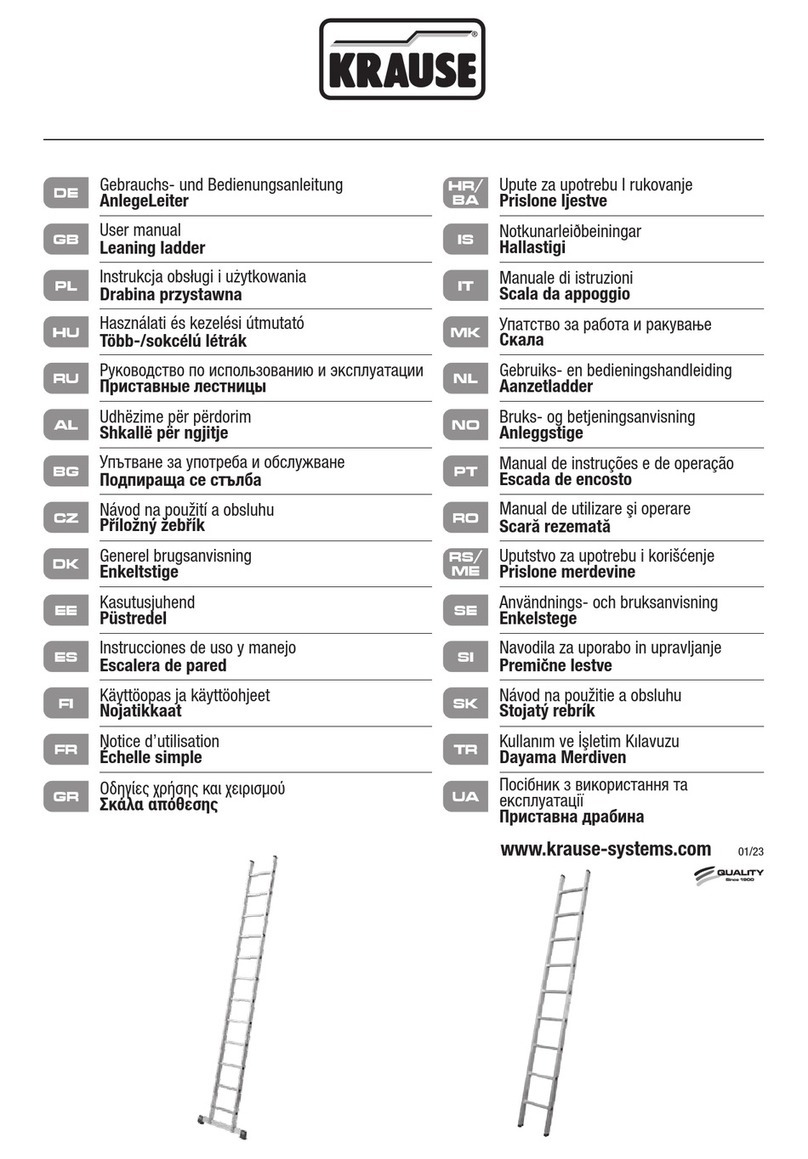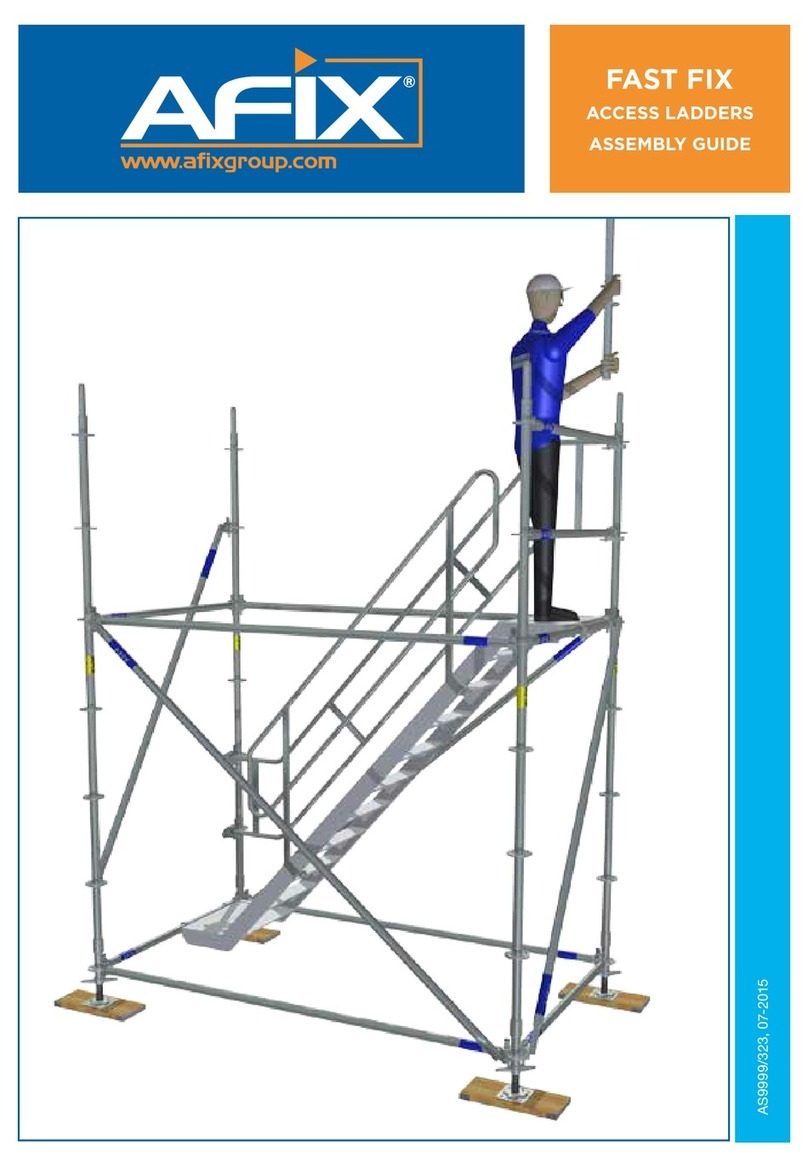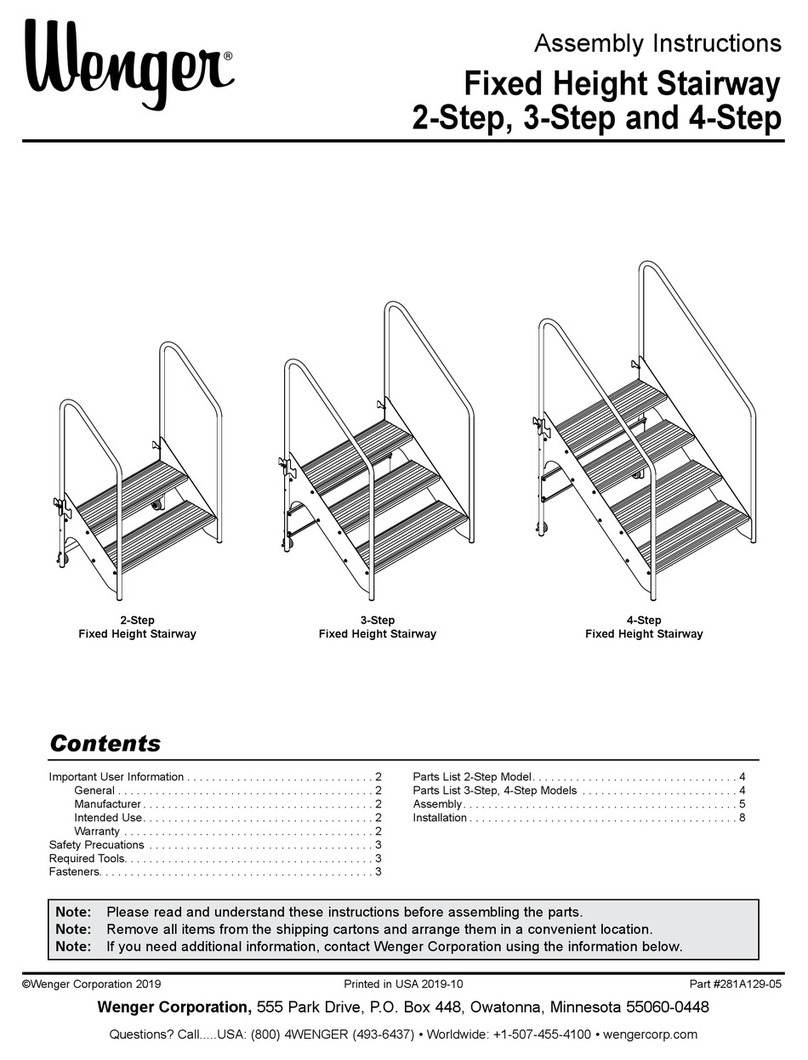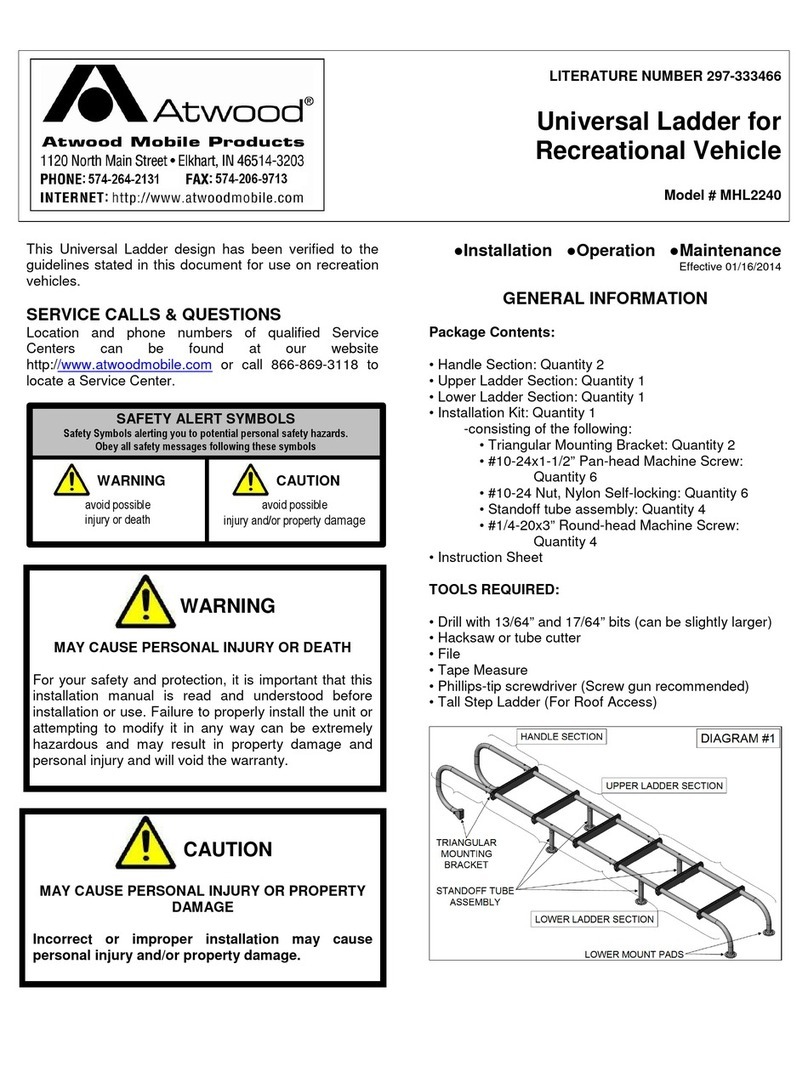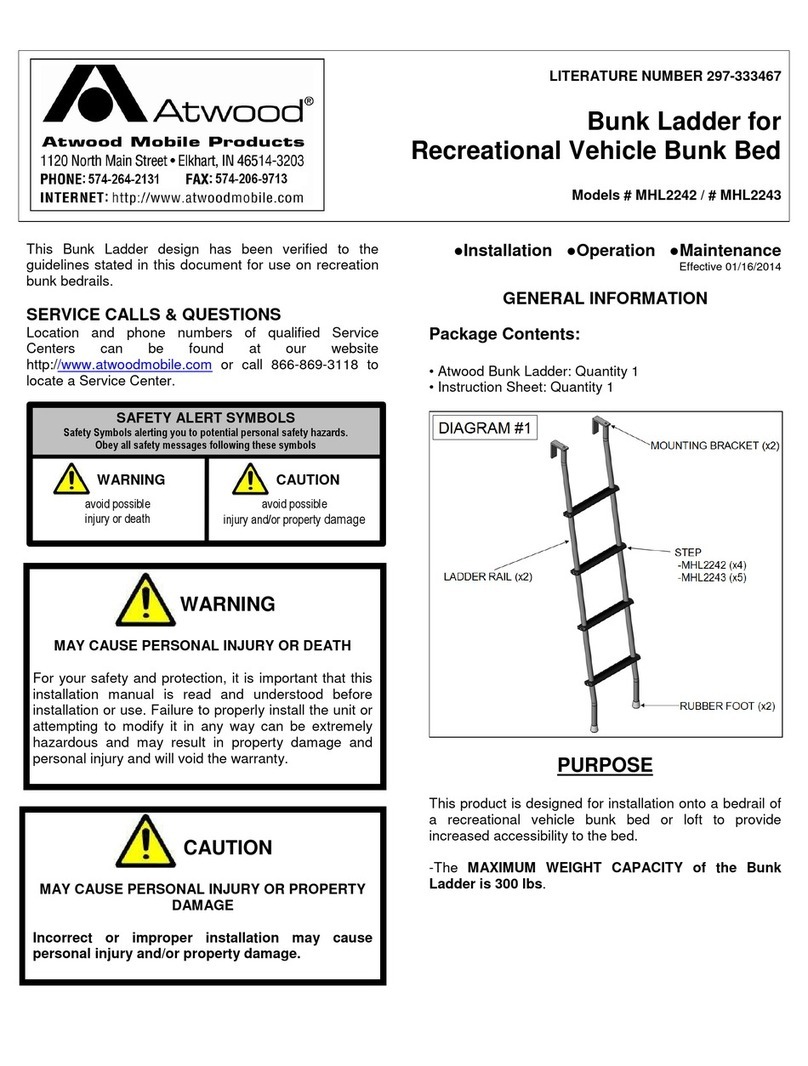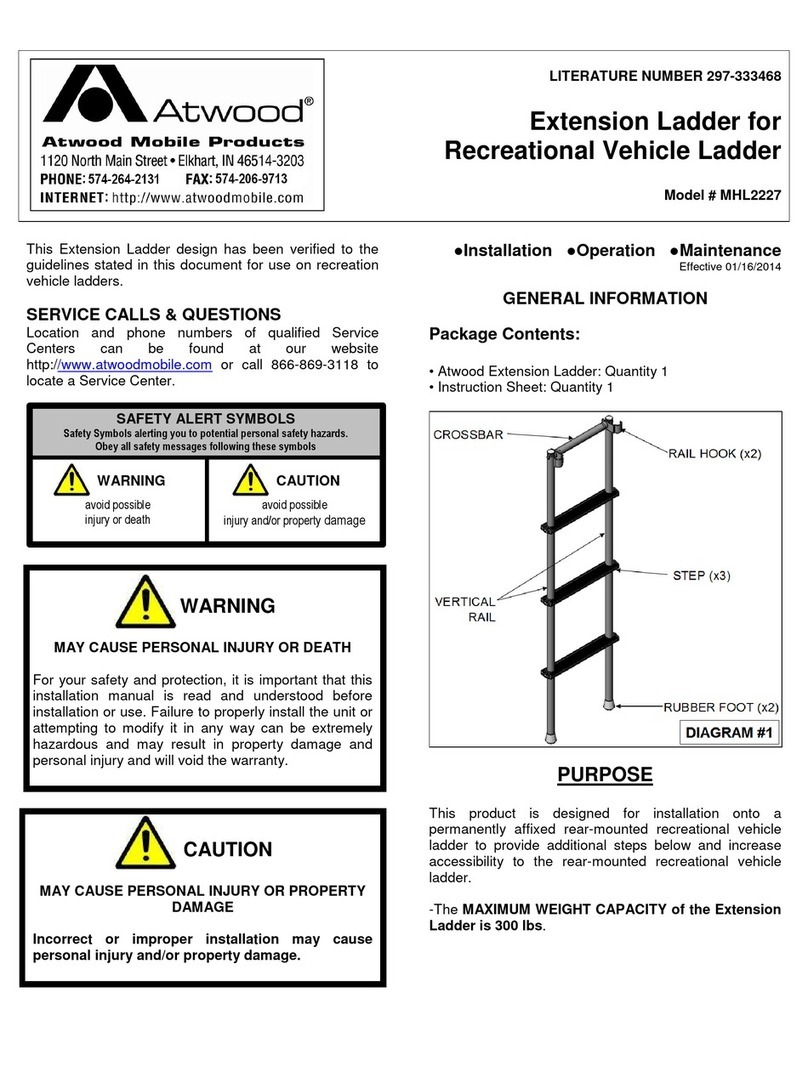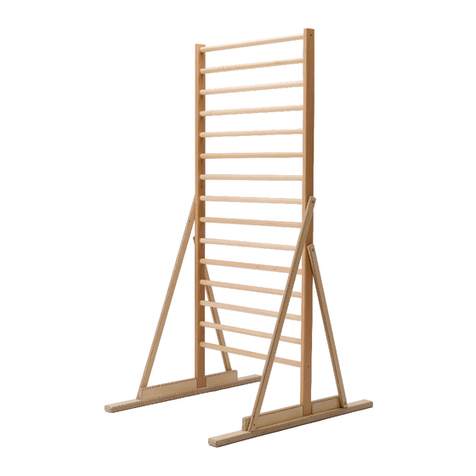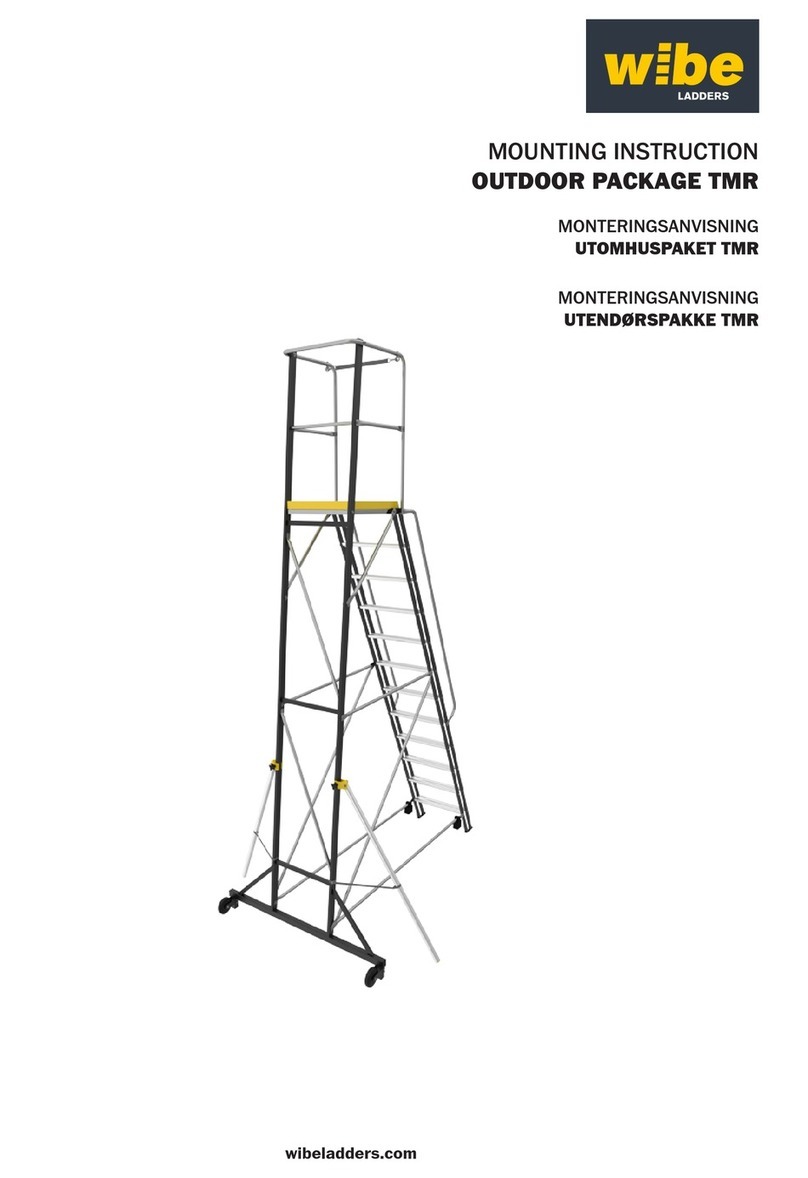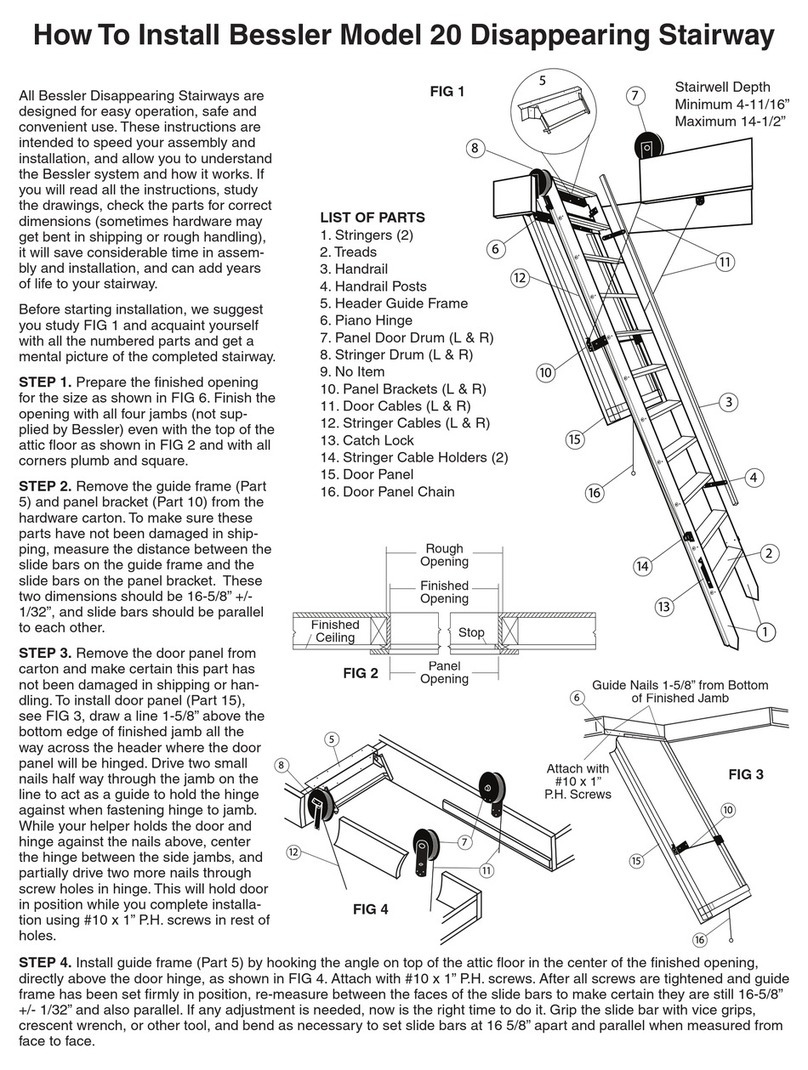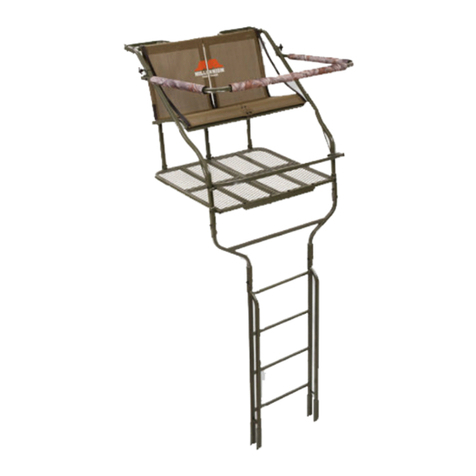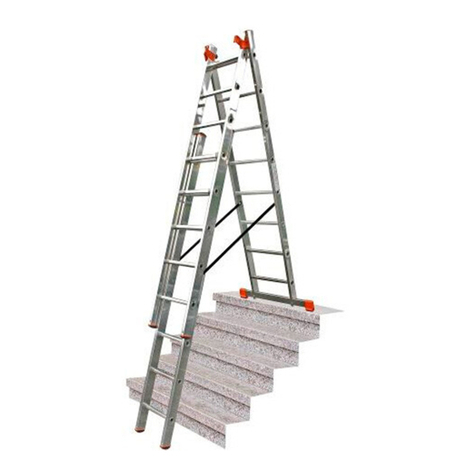
MAINTENANCE
The Universal Hinged Ladder is made from durable
materials and is intended for outdoor use. However,
minor maintenance may be required periodically.
The Universal Hinged Ladder may be cleaned with warm
soapy water. Be sure to thoroughly rinse with clean
water to retain finish. May be towel or air-dried.
Check to make sure all fasteners are tight before and
after each use, and replace any missing fasteners before
use. Do not use Universal Hinged Ladder if any
fasteners are damaged, broken or missing.
Periodically inspect the Universal Hinged Ladder tubing
and components for any damage, cracks or broken
pieces. Replace the Universal Hinged Ladder if
damaged, cracked or broken. Do not use Universal
Hinged Ladder if any components are damaged, broken
or missing.
The Universal Hinged Ladder is intended to be a
permanent fixture. When vehicle is in storage or parked
for extended periods, the Universal Hinged Ladder
should be covered as minimizing the Universal Hinged
Ladder components’ exposure to the elements or other
hazards will prolong the life of the Universal Hinged
Ladder and its components.
ATWOOD MOBILE PRODUCTS LLC
LIMITED WARRANTY
Atwood Mobile Products LLC warrants to the original retail customer of products
manufactured by Atwood Mobile Products LLC and subject to the below
mentioned conditions, that this product will be free of defects in material and
workmanship for the below specified period of time from the original date of
purchase or manufacture. For the remainder of this document Atwood Mobile
Products LLC will be referred to as Atwood. Atwood’s liability hereunder is limited
to the replacement of the product, repair of the product, or replacement of the
product with a reconditioned product at the discretion of the manufacturer. This
warranty is not transferable and is intended for original purchaser only. This
warranty is void if the product has been damaged by accident, unreasonable use,
neglect, tampering, or other causes not arising from defects in material or
workmanship. The warranty extends to the original owner of the product and is
subject to the following conditions.
1) Atwood will repair or replace any part defective in material or
workmanship, after inspection by Atwood. This warranty includes labor
charges per Atwood’s Flat Rate Schedule as required to remove and
replace the part. Service calls to customer’s location and diagnostic time
are not considered part of these charges and, therefore may be the
responsibility of the owner.
2) In the event of a warranty claim, service may be performed at any
approved OEM dealer location
3) Parts being replaced must be shipped to Atwood “Prepaid” in first class
saleable condition and identified with a return goods number, unless other
arrangements have been made. Credit for shipping costs will be included
with the warranty claim. The defective parts become the property of
Atwood and must be returned to Atwood.
4) Returned goods – Goods may not be returned without our consent.
Requests for returns should be made within 10 days from receipt of our
invoice. If the parts being returned are not defective, Atwood reserves the
right to apply a 20% restocking fee. We cannot accept material which has
been custom fabricated or modified from its original design.
5) This warranty applies only if the product is installed, repaired, maintained
and operated according to the installation/service instructions. Any
deviations from these recommended specifications must be approved in
writing by Atwood.
6) The warranty period on replacement parts is the unused portion of the
original warranty period.
7) Damage or failure resulting from misuse (including failure to seek proper
repair service), misapplication or alterations is the owner’s responsibility.
8) Atwood does not assume responsibility for any loss of use, loss of time,
inconvenience, expense for gasoline, telephone, travel lodging, loss or
damage to personal property, or revenues. Some states do not allow the
exclusion or limitation of incidental or consequential damages, so the
above limitations or exclusions may not apply to you.
9) Any implied warranties are limited to the product’s warranty period. Some
states do not allow limitations on how long an implied warranty lasts, so
the above limitation may not apply to you. This warranty gives you
specific legal rights and you may also have other rights, which vary from
state to state.
10) Replacement parts purchased outside of the original warranty carry a 90-
day warranty.
11) Any action to enforce this warranty shall not be commenced more than 3
months after the expiration of this warranty.
12) THIS WARRANTY IS EXCLUSIVE AND IS IN LIEU OF ANY AND ALL
OTHER WARRANTIES, EXPRESSED OR IMPLIED, INCLUDING
WITHOUT LIMITATION THE IMPLIED WARRANTY OF
MERCHANTABILITY AND FITNESS FOR PURPOSE.
Product Specifications for products listed below are designed for use for their
specific application. Any other use, unless authorized in writing by the Atwood
Engineering Department, voids this warranty. Original date of purchase of unit
refers to the date the consumer purchases the vehicle from a dealer. Date of
manufacture refers to the date the item was produced by Atwood Mobile
Products.
Ladders – Two (2) year from original date of purchase of unit.
1) This limited warranty is valid only when the product is applied, installed,
maintained and operated in accordance with this Atwood Installation,
Maintenance and Operating Manual. Any deviation from these
recommended specifications must be approved in writing by Atwood.
2) Any implied warranties are limited to the duration of this limited warranty
as stated above. Atwood does not assume responsibility for
consequential damage or loss, including loss of vehicle, loss of time,
inconvenience, expense for gasoline, telephone, travel, lodging, loss or
damage to personal properties, or loss of revenues. Atwood’s maximum
liability shall not exceed the cost of the goods. Some states do not allow
limitations on how long an implied warranty lasts or limitations on
consequential damages, so the above limitations may not apply to you.
This limited warranty gives you specific legal rights which may vary from
state to state.

